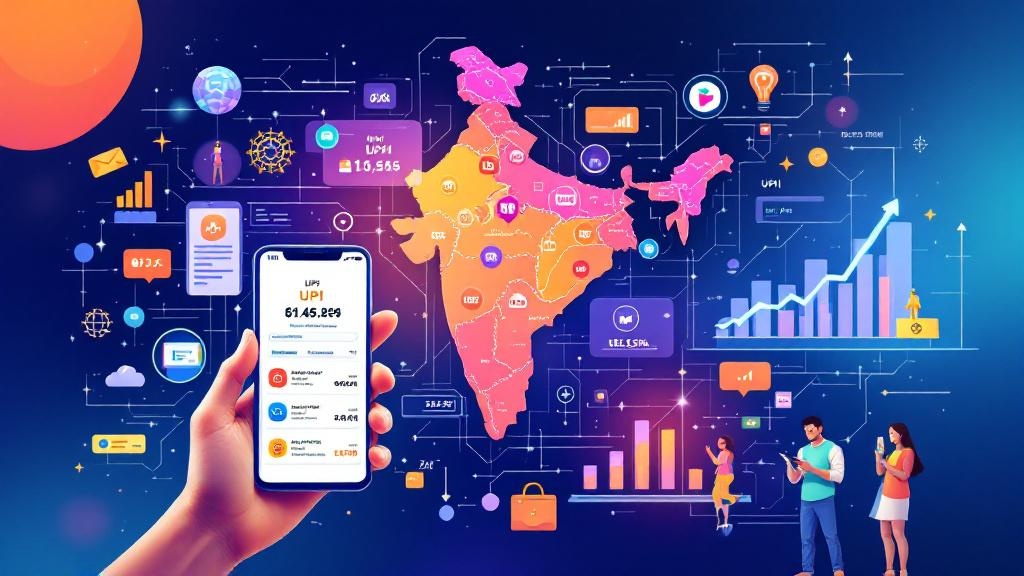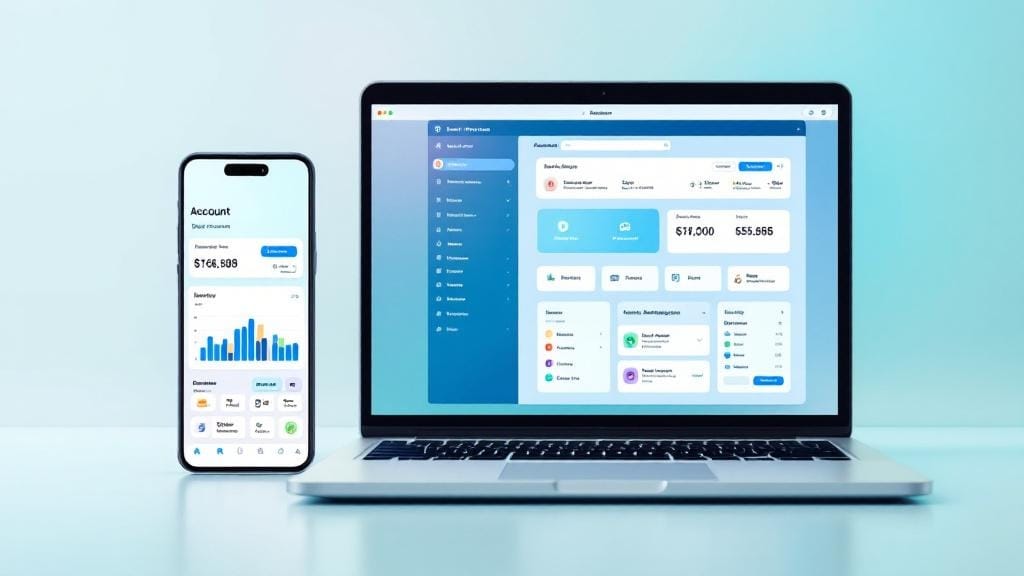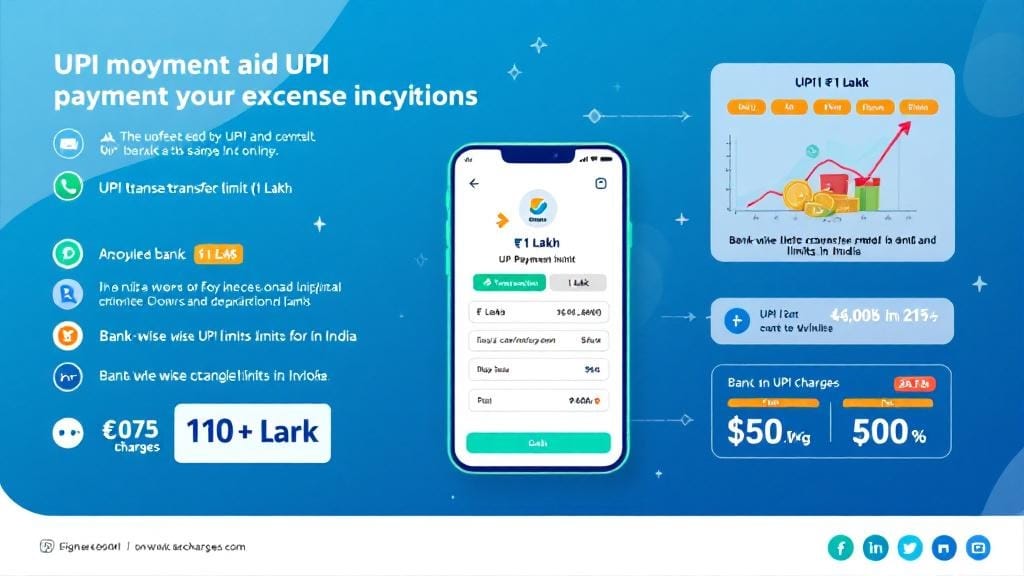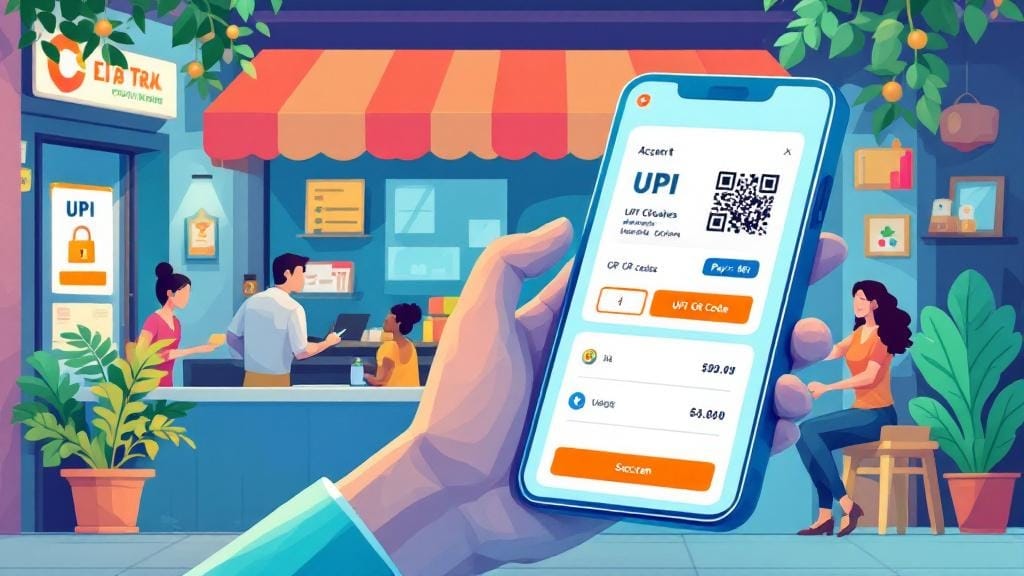India’s digital payment landscape has undergone a radical transformation in the last decade, with the Unified Payments Interface (UPI) emerging as the backbone of the nation’s cashless revolution. Today, UPI dominates the Indian digital economy, contributing to everything from everyday transactions to economic growth at a national level.
But what exactly is UPI’s share in India’s digital economy, and how has it fueled the country’s digital payment revolution? In this post, we’ll dive deep into UPI’s role in India’s evolving financial landscape, its rapid adoption, and its future potential.
What is UPI and How Does It Fit into India’s Digital Economy?
The Unified Payments Interface (UPI) is a real-time payment system developed by the National Payments Corporation of India (NPCI). It enables users to make instant bank-to-bank transactions using their smartphones, without needing to enter long account numbers or IFSC codes. UPI allows transfers between different banks through a simple mobile application and is the foundation of India’s growing cashless economy.
Since its launch in 2016, UPI has become a game-changer in digital payments, revolutionizing how consumers and businesses in India handle financial transactions. UPI’s growth is a key indicator of the rapid digital transformation taking place in India.
UPI’s Market Share in India
UPI is no longer just an alternative payment option; it’s the dominant mode of digital payment in India. By the end of 2024, UPI is expected to make up more than 50% of all digital transactions in the country, according to RBI digital payment data. In fact, UPI transactions have already surpassed those of traditional credit and debit card payments in terms of volume and value.
The Role of UPI in India’s Digital Economy
The UPI digital economy share plays a vital role in fueling the country’s economic development. Let’s look at some of the key ways UPI contributes to India’s digital transformation:
1. Increased Financial Inclusion
UPI is central to financial inclusion in India, offering an easy, low-cost way for millions of previously unbanked people to participate in the economy. UPI has expanded financial services to rural and underserved regions, making it possible for people to access banking services without ever stepping into a bank.
For instance, farmers and small business owners who previously had limited access to digital banking can now use UPI to receive payments and manage funds on their smartphones. This has been crucial in integrating Fintech in India into remote areas.
2. Boosting Digital Payments Adoption
The growth of UPI payments is largely due to its simplicity, security, and ability to handle large-scale transactions. In 2024, India’s UPI transaction growth is projected to exceed ₹200 trillion annually, with UPI dominating both peer-to-peer (P2P) and business-to-consumer (B2C) payment categories.
Increased mobile payment adoption has been a major factor in this surge. From everyday shopping to paying utility bills, UPI has made online transactions a seamless experience for users, even in tier 2 and 3 cities.
3. Reducing Dependence on Cash
UPI plays a key role in India’s transition to a cashless economy. By providing a frictionless alternative to cash, UPI is helping reduce cash usage in both rural and urban areas. With initiatives such as PMGDISHA (Pradhan Mantri Gramin Digital Saksharta Abhiyan), UPI is helping people understand how to use real-time payment systems, thus making the country’s cashless economy more inclusive.
4. Support for Small Businesses and Merchants
UPI adoption in India has also benefited small businesses by offering them an easy way to accept payments without the high transaction fees associated with card-based payments. The UPI payment statistics reveal that small merchants have contributed to a significant portion of UPI’s total transaction volume.
In fact, UPI’s ability to process micro-transactions with low fees has been key in the growth of online transactions in India, supporting millions of small-scale merchants.
5. Empowering the Indian Government’s Digital Strategy
UPI’s integration with government platforms like PMGDISHA and DBT (Direct Benefit Transfer) has enabled the government to disburse welfare funds directly to recipients, minimizing fraud and ensuring transparency. By improving the efficiency of these systems, UPI has supported the Indian government’s broader goal of creating a Digital India.
6. A Critical Enabler for Economic Development
India’s economic GDP growth has been significantly bolstered by the digital payment revolution. The role of UPI in the Indian economy can be seen in its potential to create jobs, increase tax collections, and support the informal economy, which accounts for a large portion of the country’s workforce.
UPI Usage Trends: Looking at the Numbers
Let’s take a look at some compelling UPI payment statistics to see how UPI is changing India’s digital economy landscape.
Growth in Transaction Volume
From a modest ₹7.5 lakh crore in 2017, UPI transactions skyrocketed to ₹150 lakh crore in 2023. As of early 2024, UPI transaction growth continues to rise exponentially, with projections of ₹200 lakh crore in UPI transactions by 2025.
UPI and the Shift to Mobile Payments
According to NPCI UPI growth data, over 45 billion UPI transactions were processed in 2023, with a sharp increase in mobile payments. This upward trend points to how mobile payment adoption is reshaping financial technology trends in India.
UPI’s Market Share in Digital Payments
Today, UPI accounts for over 60% of all digital payments in India, making it the leading digital payment solution. This shows the growing importance of real-time payment systems in the country’s financial ecosystem.
UPI’s Future in the Digital Economy
The future of UPI looks incredibly promising. Here’s a quick look at what’s next for UPI in India’s digital economy:
1. UPI’s Expansion to Global Markets
UPI is set to go global, with countries like Singapore and the UAE already testing cross-border UPI transactions. By 2025, UPI is expected to expand beyond India, allowing Indians abroad to make payments seamlessly in other countries.
2. UPI in Digital Wallets and Apps
With the rise of mobile wallet apps and digital wallets in India, UPI integration into these platforms will continue to grow. This will further boost UPI’s reach and adoption among smartphone users, facilitating online transactions in India and abroad.
3. AI and Machine Learning Integration
As UPI grows, the integration of artificial intelligence (AI) and machine learning to detect fraudulent transactions and enhance user experience will be critical. These technologies will help improve the security of UPI payments and make transactions faster and more efficient.
FAQs About UPI and Its Role in the Digital Economy
1. What is the future of UPI in India’s digital economy?
The future of UPI looks bright, with projections showing continued growth in transaction volume. UPI is also expanding internationally, which will further increase its share in global digital payments.
2. How does UPI contribute to India’s cashless economy?
UPI plays a central role in transitioning India to a cashless economy by providing a fast, secure, and easy way for individuals and businesses to make transactions.
3. What are UPI’s usage trends in 2024?
In 2024, UPI is expected to surpass ₹200 trillion in transaction volume, with increasing adoption in small businesses and rural areas.
4. What role does UPI play in financial inclusion?
UPI helps financial inclusion by enabling the unbanked population to participate in the digital economy through mobile-based banking and payments.
5. How does UPI compare to other digital payment systems in India?
UPI has quickly become the leading payment system in India, surpassing other methods like credit/debit cards in both volume and value.
6. How does UPI benefit small businesses?
UPI enables small businesses to accept payments without the high fees of traditional card-based systems. It also allows small businesses to integrate into the formal financial ecosystem.
7. What is UPI’s role in India’s economic development?
UPI plays a critical role in India’s economic development by supporting job creation, improving tax collection, and fostering the growth of the digital economy.
Conclusion
UPI’s share in India’s digital economy has been nothing short of transformative. With its simple, fast, and secure system, UPI has empowered millions of Indians and businesses, making digital payments more accessible and driving economic development. As UPI continues to grow, its future looks promising—ushering in a new era of financial inclusion and digital innovation in India.
By facilitating seamless real-time payments, supporting small businesses, and contributing to a cashless economy, UPI is solidifying its place at the heart of India’s financial ecosystem.
I hope this post was insightful! Feel free to share any questions or thoughts in the comments. 😊








Comments (0)